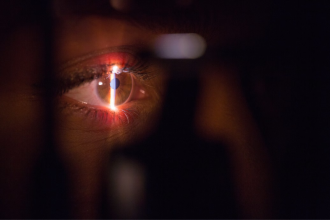In modern healthcare, there exists a critical yet often overlooked paradox. With an aging world population and rising medical care needs, healthcare systems across the globe are facing a vital shortage of skilled medical professionals. The World Health Organization has estimated that by 2030, a shortage of 10 million healthcare workers is expected. As the healthcare workforce struggles to keep up with the demand, the need for advanced technology to bridge the gap has never been more pressing.
Thus, the development of a patient monitoring system with robust capability becomes the primary requirement. An important part of this system is the hospital vital monitor that can assess a patient continuously and accurately, even in clinical settings with profound staff shortages. Indeed, this multi-parameter monitor has become one of the essential components of modern healthcare.
Components of the Patient Monitoring System
The patient monitoring system is a setup through which the physiological functions of a patient are continuously observed. At its core, it consists of several critical components. Some of the relevant ones that deserve mention here include hospital vital monitors, sensors, alarms, and data processing units.
The functioning of all these devices helps monitor vital signs such as heart rate, blood pressure, oxygen saturation, and respiratory rate. However, the most critical component of all others is the hospital vital monitor.
What Hospital Vital Monitors Detect and How They Work?
A hospital vital monitor observes a number of signs
- Heart rate
- Blood pressure
- Temperature
- Respiratory rate
- Oxygen saturation
All these signs provide vital information regarding the health of a patient and can even signal dangerous conditions that may eventually become life-threatening.
For instance, if it appears that a patient is experiencing an abnormally high heart rate or low levels of oxygen, the healthcare providers can establish that there is a complication and be able to respond in time before it worsens.
The technology adapted to these monitors is complex and reliable. The screen shows real-time data collected from the patient through sensors. Providers can analyse the data to determine the patient’s condition and, therefore, can make informed decisions about treatments. Some advanced models can even detect subtle changes in vital signs, predicting potential health issues before they become apparent.
Why Monitoring of Vital Signs is Significant?
Monitoring vital signs is not merely a matter of recording data. It can make a difference between life and death. Proper monitoring and interpretation of these vital signs help healthcare professionals make informed decisions, which is a critical component of quality patient care.
- Quick Access to Patient Well-Being – Integrated Patient Management
Continuous patient monitoring through a hospital vital monitor often comes in handy in an emergency and critical care setting where slight variations in vital signs signify a major change in a patient’s health status.
- Prevent Misdiagnosis
Misdiagnosis is one of the biggest problems in healthcare. A hospital vital monitor tends to reduce the likelihood of misdiagnosis because it provides staff with accurate, real-time data. For example, continuous ECG monitoring prevents misdiagnosis in a cardiovascular condition.
- Detect Underlying Health Issues
Most advanced diseases present with slight alterations in vital signs, such as sepsis or internal bleeding. The hospital’s vital monitor can identify these minor fluctuations and help healthcare providers in making quick decisions. This will, therefore, improve patient outcomes while also helping to shorten hospital stays and the cost of healthcare.
EDAN iX Series: A Solution to Modern Healthcare Challenges
With the ever-increasing requirement for reliable patient monitoring systems, the EDAN iX series is a trusted solution. Equipped with the latest technology, the series caters to multi-parameter patient monitoring, taking care of the huge challenges faced by most modern healthcare facilities.
- Wide-Screen Design for Enhanced Data Visibility
The new generation iX Series features a wide-screen display, offering a broader field of view and richer data presentation.
- Innovative Continuous Non-Invasive Blood Pressure (CNBP) Monitoring
The hospital vital monitor sets a new standard with its groundbreaking CNBP technology. Unlike traditional cuff-based systems, which have blind spots between measurements, CNBP delivers real-time, continuous blood pressure data.
- iFAST Technology for Quick Blood Pressure Readings
In an emergency, the EDAN multi-parameter monitor introduces iFAST 15-second quick blood pressure measurement technology. Its adoption reduces the time required for BP readings, allowing healthcare providers to respond more efficiently in emergency or high-pressure environments.
- Comprehensive Vital Sign Monitoring
Alongside CNBP, the EDAN iX Series patient monitoring system monitors other critical patient parameters, offering a holistic approach to patient care. With its expanded display capabilities, it presents detailed and up-to-date vital signs, ensuring that clinicians can track changes in real time.
- Improved Patient Experience
The iX Series not only enhances clinical accuracy but also prioritises patient comfort. By eliminating the discomfort of repeated cuff inflations and invasive methods, it delivers a more relaxed, non-invasive experience for patients while still providing precise, continuous data.
Starting from a busy ICU to an outpatient clinic, it’s possible to monitor several patients’ vital signs without losing precision and efficiency.
Conclusion
Hospital vital monitors are absolutely indispensable when healthcare systems are under increased pressure. Monitoring tools form the backbone of top-notch patient monitoring systems, which make it easier for healthcare practitioners to administer quality care even when resources are thin.
The EDAN iX series provides sophisticated upgrades in patient monitoring capacity within hospital and clinic settings. Through its accessible designs and upgraded features, the medical field can provide better, faster, and more precise care to its patients.
For more advanced healthcare diagnostics and management solutions, you can visit EDAN.














